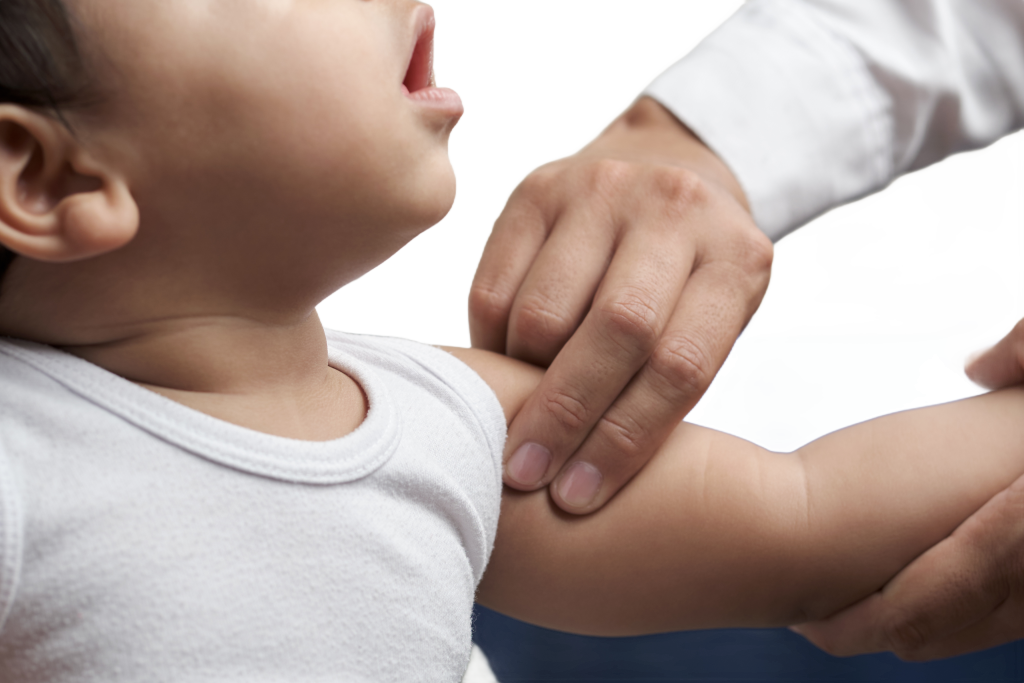Did you know that injuries are the leading cause of death of children younger than 4 years old?
The good news is that most of these injuries can be prevented.
Often, injuries happen because parents are not aware of what their children can do. At this age your child can walk, run, climb, jump, and explore everything. Because of all the new things they can do, this stage is a very dangerous time in your child’s life.
Because your child cannot understand danger or remember “no” while exploring, it’s your responsibility to protect them from injury.
Poisonings
Children continue to explore their world by putting everything in their mouths, even if it doesn’t taste good. Your child can open doors and drawers, take things apart, and open bottles easily now, so you must use safety caps on all medicines and toxic household products. Keep the safety caps on at all times or find safer substitutes to use. Contact Poison Help for more information.
Your child is now able to get into and on top of everything. Be sure to keep all household products and medicines completely out of sight and reach. Never store lye drain cleaners in your home. Keep all products in their original containers. Use medicines exactly as directed and dispose of unused medicine safely as soon as you are finished with it.
If your child does put something poisonous into his or her mouth, chttps://www.parentinginottawa.ca/en/babies-and-toddlers/child-falls.aspx#:~:text=Always%20watch%20your%20baby%20when,with%20grips%20to%20prevent%20slips.all
Ontario Poison Centre immediately at
1.844-POISONX (844-764-7669)
Do not make your child vomit.
Falls
To prevent serious falls, lock the doors to any dangerous areas. Use gates on stairways and install operable window guards above the first floor. Remove sharp-edged furniture from the room your child plays and sleeps in. At this age your child will walk well and start to climb, jump, and run as well. A chair left next to a kitchen counter, table, or window allows your child to climb to dangerously high places. Remember, your child does not understand what is dangerous.
If your child has a serious fall
or does not act normally after a fall, call your doctor.
Burns
The kitchen is a dangerous place for your child during meal preparation. Hot liquids, grease, and hot foods spilled on your child will cause serious burns. A safer place for your child while you are cooking, eating, or unable to give them your full attention is the playpen, crib, or stationary activity center, or buckled into a high chair. It’s best to keep your child out of the kitchen while cooking.
Children who are learning to walk will grab anything to steady themselves, including hot oven doors, wall heaters or outdoor grills. Keep your child out of rooms where there are hot objects that may be touched or put a barrier around them. If you have a gas fireplace,, keep children away from it while it is in use and for at least an hour after turning it off. The glass doors get extremely hot and can cause severe burns.
Your child will reach for your hot food or cup of coffee, so don’t leave it within your child’s reach. NEVER carry your child and hot liquids at the same time. You can’t handle both.
If your child does get burned, immediately put cool water on the burned area. Keep the burned area in cool water for a few minutes to cool it off.
If it still feels warm to the touch repeat cooling
To protect your child from tap water scalds, the hottest temperature at the faucet should be no more than 120°F. In many cases you can adjust your water heater.
Make sure you have a working smoke alarm on every level of your home, especially in furnace and sleeping areas. Test the alarms every month. It is best to use smoke alarms that use long-life batteries, but if you do not, change the batteries at least once a year.
Drowning
At this age your child loves to play in water. NEVER leave your child alone in or near a bathtub, pail of water, wading or swimming pool, or any other water, even for a moment. Empty all buckets after each use. Keep the bathroom doors closed. Your child can drown in less than 2 inches of water. Knowing how to swim does NOT mean your child is safe near or in water. Stay within an arm’s length of your child around water.
If you have a swimming pool, fence it on all 4 sides with a fence at least 4 feet high, and be sure the gates are self-latching. Most children drown when they wander out of the house and fall into a pool that is not fenced off from the house. You cannot watch your child every minute while he or she is in the house. It only takes a moment for your child to get out of your house and fall into your pool.
And remember car safety
Car crashes are a great danger to your child’s life and health. The crushing forces to your child’s brain and body in a crash or sudden stop, even at low speeds, can cause severe injuries or death. To prevent these injuries, use a car safety seat EVERY TIME your child rides in the car. All infants and toddlers should ride in a rear-facing car safety seat until they reach the highest weight or height allowed by their car safety seat’s manufacturer. Be sure that the safety seat is installed and used correctly. Read and follow the instructions that come with the car safety seat and the instructions for using car safety seats in the owners’ manual of your car.
The safest place for all infants and children to ride is in the back seat.
Do not leave your child alone in or around the car. Keep vehicles and their trunks locked. Children who are left in a car can die of heat stroke because temperatures can reach deadly levels in minutes. They can be strangled by power windows or knock the vehicle into gear. Always walk behind your car to be sure your child is not there before you back out of your driveway. You may not see your child behind your car in the rear-view mirror.
Remember, the biggest threat to your child’s life and health is an injury.
Top 10 Exposures in 2021: Children Under 6 Years
- Household Cleaners – Bleach, all-purpose cleaners, detergents and disinfectants are easily accessed and often not stored safely. The Poison Centre has seen an increase in calls about these exposures during the pandemic. See our poison prevention tips to learn about storing these products safely!
- Personal Care Products – This includes products like mouthwash, toothpaste, sunscreen, perfume, cosmetics, nail polish and nail polish removers, all of which should be locked up and out of sight like other chemicals in the household.
- Pain Relievers – Medicines that are given to relieve pain are the most common exposure calls made to the Ontario Poison Centre.
- Plants – Young children will often be tempted to bite into a leaf of a plant. Some are harmful and others are not. Know the names of all plants growing in and around your home. Visit the Plants section of our website to learn more.
- Vitamins – Make sure to teach young children that vitamins are medicine. Keep them locked up with the rest of your family’s medicine.
- Foreign Bodies – Although these are not actually poisonous substances, they can still be hazardous due to the risk of choking or obstruction (becoming stuck during digestion).
- Herbal & Homeopathic Remedies, Dietary Supplements – Remember – “natural” does not necessarily mean that it’s safe, especially for young children. Do not use these products without speaking with your doctor first and keep them locked up with your other medicines.
- Skin Creams – There are many creams and ointments that are appealing to young children. These may include sore muscle rubs, steroid creams, wart removers and calamine lotions.
- Pesticides – These substances are used to get rid of pests. Exposure to more dangerous pesticides is less frequent because of stronger regulation of these substances.
- Allergy Medicines – Medicines that are taken for seasonal allergies or allergic reactions can be dangerous when taken incorrectly.

Kathryn Davies
President / Owner
Life’s Emergency Training

